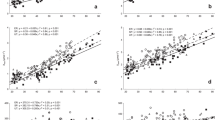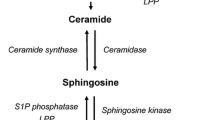Abstract
Catecholamines (noradrenaline, NA; adrenaline, AD; dopamine, DA) influence the metabolic and cardiovascular responses to exercise. However, changes in catecholamine metabolism during exercise are unclear. Plasma normetanephrine (NMET), metanephrine (MET) and catecholamine responses to a laboratory-based model of games-type exercise were examined. Twelve healthy men completed a resting control trial and a trial consisting of ten 6 s cycle ergometer sprints interspersed with 30 s recovery, in randomised order. Resting and post-sprint venous blood samples were taken. Plasma NA and AD increased after each sprint but DA was unaltered. Plasma nephrines increased significantly from sprint 4 onwards with peak NMET increasing 60% to 0.76 ± 0.19 nmol l−1 and MET 230% to 0.37 ± 0.16 nmol l−1 from resting values (P < 0.05). The results demonstrate increased catecholamine metabolism via elevated catechol-O-methyl transferase activity during intermittent sprinting. The results may aid regulation of the metabolic and cardiovascular responses to exercise by maintaining tissue adrenoceptor sensitivity to circulating catecholamines.



Similar content being viewed by others
References
Balsom PD, Gaitanos GC, Ekblom B, Sjödin B (1994) Reduced oxygen availability during high intensity intermittent exercise impairs performance. Acta Physiol Scand 152(3):279–285
Bracken RM, Linnane DM, Brooks S (2005) Alkalosis and the plasma catecholamine response to high intensity exercise in man. Med Sci Sports Exerc 37(2):227–233
Brooks S, Nevill ME, Meleagros L, Lakomy HKA, Hall GM, Bloom SR, Williams C (1990) The hormonal responses to repetitive brief maximal exercise in humans. Eur J App Physiol 60:144–148
Dill DB, Costill DL (1974) Calculation of percentage changes in volumes of blood, plasma, and red cells in dehydration. J App Physiol 37(2):247–248
Eisenhofer G, Kopin IJ, Goldstein DS (2004) Catecholamine metabolism: a contemporary view with implications for physiology and medicine. Pharmacol Rev 56:331–349
Esler M, Jennings G, Lambert G, Meredith I, Horne M, Eisenhofer G (1990) Overflow of catecholamine neurotransmitters to the circulation: source, fate, and functions. Physiol Rev 70(4):963–985
Febbraio MA, Lambert DL, Starkie RL, Proietto J, Hargreaves M (1998) Effect of epinephrine on muscle glycogenolysis during exercise in trained men. J Appl Physiol 84(2):465–470
Gaitanos GC, Williams C, Boobis LH, Brooks S (1993) Human muscle metabolism during intermittent maximal exercise. J Appl Physiol 75(2):712–719
Goldstein DS, Eisenhofer G, Kopin I (2003) Sources and significance of plasma levels of catechols and their metabolites in humans. J Pharmacol Exp Therap 305(3):800–811
Hagberg JM, Hickson RC, McLane JA., Ehsani AA, Winder WW (1979) Disappearance of norepinephrine from the circulation following strenuous exercise. J Appl Physiol 47(6):1311–1314
Kaiser P, Tesch PA, Frisk-Holmberg M, Juhlin-Dannfelt A, Kaijser L (1986) Effect of beta 1-selective and non-selective beta-blockade on work capacity and muscle metabolism. Clin Physiol 6(2):197–207
Kjær M (1999) Neuroendocrine regulation during exercise. In: Hargreaves M, Thompson M (eds) Biochemistry of exercise X. Human kinetics, pp 47–55
Kjær M, Christensen NJ, Sonne B, Richter EA, Galbo H (1985) Effect of exercise on epinephrine turnover in trained and untrained male subjects. J Appl Physiol 59(4):1061–1067
Lakomy HKA (1986) Measurement of work and power using friction loaded cycle ergometers. Ergonomics 29(4):509–517
Lenders JWM, Keiser HR, Goldstein DS, Willemsen JJ, Friberg P, Jacobs M-C, Kloppenborg PWC, Thien T Eisenhofer G (1995) Plasma metanephrines in the diagnosis of pheochromocytoma. Ann Inter Med 123(2):101–109
Leuenberger U, Sinoway L, Gubin S, Gaul L, Davis D, Zelis R (1993) Effects of exercise intensity and duration on norepinephrine spillover and clearance in humans. J Appl Physiol 75(2):668–674
Maughan RJ (1982) A simple, rapid method for the determination of glucose, lactate, pyruvate, alanine, 3-hydroxybutyrate and acetoacetate on a single 20-ul blood sample. Clin Chim Acta 122(2):231–240
Miura Y, Watanabe T, Noshiro T, Shimizu K, Kusakari T, Akama H, Shibukawa S, Miura W, Ohzeki T, Takahashi M, Sano N (1995) Plasma free dopamine: physiological variability and pathophysiological significance. Hyperten Res 18:S65–S72
Murphy MB (2000) Dopamine: a role in the pathogenesis and treatment of hypertension. J Hum Hypert 14(S1):S47–S50
Odink J, Van den Berg EJ, Van den Berg H, Bogaards JJP Thissen JTNM (1986) Effect of workload on free and sulphoconjugated catecholamines, prolactin and cortisol. Int J Sports Med 7:352–357
Pequignot JM, Peyrin L, Mayet MH, Flandrois R (1978) Metabolic adrenergic changes during submaximal exercise and in the recovery period in man. J Appl Physiol 47:701–705
Raber W, Raffesberg W, Waldhausl W, Gasic S, Roden M (2003) Exercise induces excessive normetanephrine responses in hypertensive diabetic patients. Eur J Clin Invest 33(6):480–487
Sagnol M, Claustre J, Cottet-Emard JM, Pequignot JM, Fellmann N, Coudert J, Peyrin L (1990) Plasma free and sulphated catecholamines after ultra-long exercise and recovery. Eur J Appl Physiol 60:91–97
Sakai T, Maeda H, Matsumoto N, Miura S, Kinoshita A, Sasaguri M, Ideishi M, Tanaka H, Shindo M, Arakawa K (1995) Plasma free and sulfoconjugated dopamine before and after a half-marathon. Hyperten Res 18(suppl 1):S161–S163
Strobel G, Freidmann B, Siebold R, Bartsch P (1999) Effect of severe exercise on plasma catecholamines in differently trained athletes. Med Sci Sports Ex 31(4):560–565
Strobel G, Werle E, Weicker H (1990) Isomer specific kinetics of dopamine β-hydroxylase and arylsulfatase towards catecholamine sulfates. Biochem Intern 20(2):343–351
Tidgren B, Hjemdahl P, Theodorsson E, Nussberger J (1991) Renal neurohormonal and vascular responses to dynamic exercise in humans. J Appl Physiol 70(5):2279–2286
Wallin BG, Sundolf G, Eriksson BM, Dominiak P, Grobecker H, Lindblad LE (1981) Plasma noradrenaline correlates to sympathetic muscle nerve activity in normotensive man. Acta Physiol Scand 111:69–73
Weltman A, Wood CW, Womack CJ, Davis SE, Blumer JL, Alvarez J, Sauer K, Gaesser GA (1994) Catecholamine and blood lactate responses to incremental rowing and running exercise. J App Physiol 76(3):1144–1149
Winder WW, Yang HT, Jaussi AW, Hopkins CR (1987) Epinephrine, glucose, and lactate infusion in exercising adrenodemedullated rats. J Appl Physiol 62(4):1442–1447
Young JB Landsberg L (1998) Catecholamines and the adrenal medulla. In Wilson JD, Foster DW, Kronenberg HM, Larsen PR (eds) Williams textbook of endocrinology, 9th edn. WB Saunders and Co., Philadelphia, pp 665–728
Zamecnik J (1997) Quantification of epinephrine, norepinephrine, dopamine, metanephrine and normetanephrine in human plasma using negative ion chemical ionization GC-MS. Can J Anal Sci Spectroscop 42(4):106–112
Author information
Authors and Affiliations
Corresponding author
Rights and permissions
About this article
Cite this article
Bracken, R.M., Linnane, D.M. & Brooks, S. Plasma catecholamine and nephrine responses to brief intermittent maximal intensity exercise. Amino Acids 36, 209–217 (2009). https://doi.org/10.1007/s00726-008-0049-2
Received:
Accepted:
Published:
Issue Date:
DOI: https://doi.org/10.1007/s00726-008-0049-2




